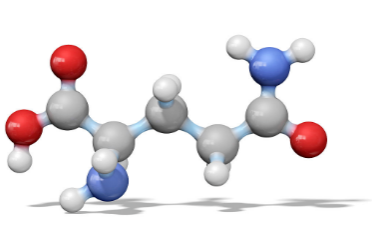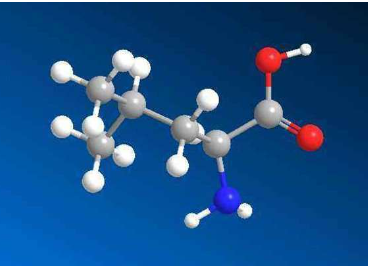Classification and characteristics of amino acids
June 12, 2024
01
Non polar aliphatic amino acids
Glycine
In 1820, H. Braconnot isolated glycine during his research on gelatin hydrolysis, which was considered a sugar at the time. Later, he discovered that this "gelatin sugar" contained nitrogen atoms and was the simplest amino acid, called glycine (derived from the Greek word "glycys", meaning "sweet" or "sweet"). In fact, the sweetness of glycine is 80% of that of sucrose. Glycine is the first amino acid discovered by humans, and it is also the simplest, non-polar, and non optically active amino acid. Glycine is extracted from soybeans. Alanine
According to the rules of organic naming, alanine comes from aldehyde aldehyde, ethanol alcohol, and ethyl comes from the Arabic article al -. Valine
Valine was isolated from pancreatic extract by Von Group Besanez in 1856. It was not until 1906 that Fisher analyzed its chemical structure as 2-amino-3-methylbutyric acid and named it valine, derived from valerian. Leucine
Leucine (also known as leucine) was first isolated from cheese by Proust in 1819. Later, Braconnot (1820) obtained its crystals from acid hydrolysates of muscle and wool and named it leucine. The English name is Leucine, derived from the Greek word Leuco, meaning 'white'. It is called leucine because it is a white powder, and leucine because it is easy to crystallize and has a high refractive index, making it very shiny. Ile Isoleucine
Extension of Leucine Naming. Ios - derived from the Greek word isos (identical); It is isomeric with leucine, so it is extended to be isomeric, and then to the Chinese word for "hetero". Proline
Fischer first discovered it in white gelatin in 1901. The English scientific name is Pyrrolidone Carboxylic Acid, which is abbreviated as "Proline". The Chinese name "proline" is because it is an important component of collagen, and "proline" means dried meat or fruit. Phenylalanine
According to organic naming conventions. Phenyl, derived from the Greek word phaino (shiny). Alanine comes from aldehyde aldehyde, ethanol alcohol, and ethyl comes from the Arabic article al -.

02
Polar neutral amino acids
Serine (Ser)
In 1865, Cramer hydrolyzed sericin in sulfuric acid to obtain it, but initially mistakenly identified it as glycine. Later, it was found that its molecular structure was very similar to alanine, except for the presence of a hydroxyl group in its molecular structure. Due to the fact that this nitrogen-containing acid is isolated from sericin protein, it is named "serine". Cysteine
Because it is half of cysteine, it is called "cysteine" in Chinese. The reason why "cysteine" is named this way is because it was discovered by Wollaston in 1810 from bladder stones. In 1832, Berzelius named it cysteine. Methionine
There are many in the egg, so it is called "methionine". Methyl - derived from the Greek word "alcohol"; Thio sulfur comes from the Greek word "sulfur". Asparagine (Asn)
Named according to the derivative naming convention. In 1806, it was first discovered from asparagus juice that asparagus is a herbaceous plant belonging to the Asparagus genus of the Asparagus family. Glutamine
Named according to the derivative naming convention. In 1883, Schulze discovered Gln from beet juice, which was later detected in germinated seeds and proteins. Thr threonine
Threonine was isolated and identified by McCoy et al. from fibrin cleavage products in 1935. In 1936, Meyer studied its spatial structure and named it threonine due to its similarity to threose. Tryptophan
Tryptophan was isolated by British Frederick Hopkins and Sydney Cole in 1901 while digesting casein with insulin. The name Tryptophane comes from Trypsin (insulin) and phase, which appear in Greek. (Strangely, this amino acid is not ending with `ine`, like most other amino acids, but ending with `ane`.) Tyrosine
It was first discovered by German chemists in cheese ("Tyro" in Greek means cheese), hence it is called tyrosine.

03
Acidic amino acids
Aspartic acid
In 1806, L.N. Vanquelin and J P. Robiquet isolated asparagine (Asn) from the juice of Asparagus. In 1827, A. Plisson isolated asparagine from the root of Hollyhock (Althaenrosea). In 1868, Ritthausen isolated aspartic acid from proteins. Due to its earliest discovery in Asparagus, it is called aspartic acid. Glutamic acid
In 1861, a German professor first extracted the component of monosodium glutamate from wheat gluten. Later in 1908, Japanese Ikeda chrysanthemum seedlings decomposed into monosodium glutamate from the juice boiled from kelp, and were first introduced to the market as artificial seasoning. Due to being mainly extracted from glutelin in the past, it is called glutamic acid.

04
Alkaline amino acids
Arginine
Arginine was originally isolated and extracted by Schlus from plant lupin seedlings in 1886. In 1895, Hedin discovered that arginine was present in mammalian proteins. Natural products are abundant in protamine, hence they are called arginine. Histidine
The content of histone is relatively high, hence it is called histidine. Histidine was first isolated by German physician Albrecht Kossel in 1896 Lysine
Lysine was isolated from casein hydrolysate by Dreehsel in 1889. At that time, what was actually obtained was a mixture of lysine and arginine, named Lystatine. Later, Fisher separated lysine from this Lystatine and named it Lysine Selenium cysteine (Sec)
Follow the naming convention. Selenium+cysteine; The structure is similar to cysteine, except that the sulfur atom is replaced by selenium. In 1978, Forstrom and Tappel in the United States identified selenocysteine (Sec) as the active center of glutathione peroxidase, which is currently the 21st known amino acid involved in protein biosynthesis. Pyrrolysine
Follow the naming convention. Pyrro+lysine; In 2002, two research teams from Ohio State University discovered the 22nd known amino acid involved in protein biosynthesis from a methanogenic methyltransferase. But it's not the protein amino acids that make up the human body.
Shaanxi Huike Botanical Development Co., Ltd. a integrated enterprise which is focus on natural products, Plant extract related products and services.We mainly focus on pharmaceutical, functional food, Freeze-dried powder,Natural Pigment,Homology of medicine and food,beverages and other business services.
For more information about inulin, please contact us!
Email:marketing@huikes.com
2024-06-12
Shaanxi Huike Botanical Development Co., Ltd.






